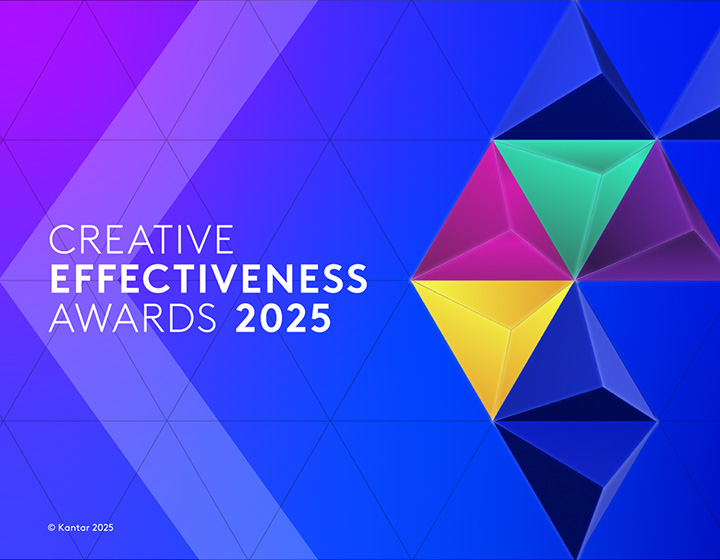In today’s fragmented media world, advertisers have no choice but to use a variety of media channels to reach their intended audience. The channels you use, and how well your content works within those channels, will have a huge influence on the effectiveness of your campaign. Kantar’s Context Lab research shows that campaigns are seven times more impactful among receptive audiences.
Ensuring your campaign works in each media context is essential. But the only real way to know whether it will work on a specific channel is to test it. And these days, testing takes very little time, but it can improve the returns of the average ad by over 32%.
Content needs to work with the audience’s mindset
It used to be that advertisers took their TV ad, ran it on YouTube, and expected it to be successful. And all too often that expectation proved false. But back then no one spent much money on digital, so what did it matter if the ad proved ineffective? Taking a TikTok ad and running it on TV makes no more sense than doing the reverse. People consume media channels differently, and content must work with the appropriate audience mindset to be effective.
Now that digital is front and center in the media mix, advertisers can no longer afford to make do with hand-me-down TV content. However, TV advertising can benefit from what makes digital successful, provided the execution does not ignore differences in the way people consume each medium.
How TV ads can benefit from digital
Today, advertisers are borrowing visual techniques and editing styles from digital and social media and applying them to their TV advertising. By doing so, they add a contemporary look and feel that brings some of the excitement from digital to its broadcast peer. Kantar’s Creative Effectiveness 2022 Awards reveal this as one of the 5 strategic sparks used by the world’s best advertisers.
One of the TV winners from Spain, The Chupa Chups “XXL Flavour Playlist, is a great example. It includes Animoji-type graphics overlaying the footage of real characters, extreme close-ups tightly edited with the music, one section with three dancers in portrait format (à la TikTok), visual humour (which works without sound in digital environments), and a knowing ‘fourth wall’ look from one of the protagonists at the end.
Chupa Chups “XXL Flavour Playlist
Source: Kantar Creative Effectiveness Awards
To be clear, however, while TV advertising can benefit from using a more digital aesthetic, content must be customised to work with a different audience mindset, and the best way to ensure an effective translation is to test the revised execution.
Different channels, different mindsets
The way people use a media channel has a significant influence on what type of content is best received. There is a big difference between scrolling through your social media newsfeed for items of interest and passively watching live sports on TV.
With social media, you are actively involved with the content, able to click on or ignore content at will. And in that context, advertising is more likely to be seen as interruptive. With TV, you have little control over the content but, if you have nothing better to do, you might prefer to just ‘ride out’ the occasional ad break. Media Reactions shows that people are more receptive to advertising seen on TV than on most digital channels.
While advertising might not be as well-received on digital channels, these channels do have different strengths. For instance, if you follow several fashion accounts on Instagram the chances are that you will see a relevant ad at the right time increase. And advertising on Amazon can be even more task relevant.
Testing proves that context matters
Media Reactions demonstrates that every media channel has its unique strengths and weaknesses, and the importance of finding the media environments that best fit your brand and campaign objectives. Ad pretesting proves that, to perform at its best, content must be adapted to fit the channel.
Take the example of an ad we tested across TV, YouTube, and Facebook. When viewers didn’t have the option to skip on TV and YouTube, the ad performed reasonably well on branding (the ability to ensure people recognise which brand is being advertised). However, on Facebook, most people skipped after only seeing 3% of the ad, meaning few people had the chance to see the brand at all. Also, on both digital platforms, the ad wasn’t as engaging as it was on TV In-context testing showed that the ad needed tailoring for digital contexts, including earlier brand cues for Facebook and a more engaging hook for both digital platforms.
Make sure your ads work in context
To get the most out of your advertising campaign, there are two steps you need to take.
- First, think about how your audience will use different media channels or platforms, and what they might expect of advertising in that context. This is particularly important in today’s fragmented media landscape, with new media brands appearing all the time. To help you think through your campaign, Kantar’s Media Reactions study gives you guidelines on how advertising on different channels and platforms is perceived by consumers.
- Second, test your ads in each context. And test them while there is still time to make changes. Testing no longer needs to take more than a few hours, so make sure you plan to do so, and then adapt your content to work as effectively as possible in each channel.
The good news is that it is easier than ever to test what works for a specific platform or to compare performance across different channels. Get in touch to discuss how to optimise your TV and digital ads. We have flexible packages that can help you get the most out of your media investments.


